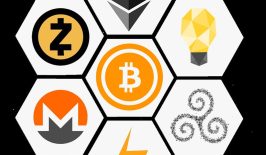What is it exactly that blockchain can do? And why it so incredibly hyped? RESET takes a closer look at the technology and where its strengths (and weaknesses) lie.
To understand what a blockchain is and how it works, you can imagine it, in a very simplified way, as a kind of register that is constantly being extended with new entries. This is shared on all computers throughout a network and is completely visible for all participants. If the participants of the network carry out transactions – this can be the transfer of money, or property, or information etc – these are recorded in the blockchain, stored digitally in blocks, and attached to the register in an encrypted form.
Whenever a transaction is made, this change is immediately visible to all users, with an identical version of the blockchain existing on all the computers within the network. The security of the transactions is ensured by so-called miners – network participants who, in a nutshell, make their computing power available for the validation of transactions. The more miners there are, the more resistant a blockchain is to manipulation. The system distributes power across an entire peer-to-peer network without any central control. In return, the miners receive a block reward, such as new bitcoins or another cryptocurrency.
Once a transaction has been validated, it is permanently stored in a block and cannot be changed. In addition to the transactions, each block also contains encrypted information about the previous block. This results in an ever-growing chain of data blocks that cannot be manipulated (or can only be manipulated with a great deal of effort) and where it possible to trace the history of all the transactions right back to the first block.
The strengths of the blockchain: decentralisation, immutability and transparency
This simplified description also demonstrates the strengths and disruptive potential of the blockchain: encryption and decentralisation are its core components, and the combination of the two is what makes blockchain technology highly secure.
By not having the databases stored on a single computer or a central server, but on a variety of devices, they are very resistant to manipulation and it is almost impossible for individual parties to tamper with the information retrospectively. In order to manipulate a blockchain, all parties who have a copy of the database would have to coordinate and make the same changes. The better the data is distributed in the network, the better the blockchains are protected against manipulation.
And all transactions can be carried out directly within the network without the need for intermediary institutions such as banks – the blockchain network is decentralised and self-organised. It is also extremely secure thanks to an elaborate encryption process.
The blockchain-based platform Ethereum has added an interesting aspect to the technology: Smart Contracts, the door opener for all transactions beyond purely financial ones. The Smart Contracts can be imagined as rules or conditions inscribed in the block chain, according to which transactions must be carried out in order to be valid. An example from the Sharing Economy would be: after the transfer of a certain amount of money, a bicycle lock is opened for the user and is available to them for the booked time.
A lot has been reported about blockchains in connection with cryptocurrencies, but the three key features of blockchain technologies – decentralisation, immutabilty and transparency, have led to it also being put to use by innovators who are working for environmental and/or social good.
From blockchain to Distributed Ledger Technologies (DLT)
Although “blockchain” is often used as an umbrella term, it’s actually just one specific type of Distributed Ledger Technology. The term DLT describes various kinds of decentralised databases where information is distributed throughout several locations, regions or participants. Just like in a blockchain, every participant copies and saces an identical copy of the database, and updates are verified via a validation process. There are DLTs that are much less energy-intensive than the Bitcoin blockchain, for example, where different, consenus mechanisms are used that require less computing power.
In this Blockchain Special we’re examining the way that DLTs can be used for ecological and social good and taking a closer look out a few of the “blockchain for good” projects and startups that we believe have huge potential.
To read the rest of the interviews, case studies and background articles in RESET’s Blockchain Special, click here.
This is a translation by Marisa Pettit of an original article that first appeared on RESET’s German-language site.





